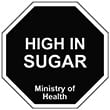Sweet Addition Labelling of added sugars
01 June 2022

Global attention was drawn to the issue of sugar labelling in 2015, when the World Health Organisation (WHO) released a Guideline on sugar intake, recommending that, at most, 10% of a person's daily energy intake should come from added sugars.
The WHO defines added sugars as sugars added to foods or beverages by the manufacturer, cook or consumer, including natural sugars from honey, syrups and fruit juices/concentrates.
In 2018, an investigation by the Australia and New Zealand Forum on Food Regulation into the labelling of sugars found that food labelling requirements were inadequate to enable consumers to make informed decisions about added sugars. You can read about this investigation in our earlier alert here.
In 2020, at the Forum's request, FSANZ undertook a review to determine whether, and if so how, the nutrition labelling requirements under the Code should be amended to assist consumers to make informed decisions in relation to added sugars. You can read our earlier alerts on those developments here and here.
In the 2020 review, FSANZ considered three options for reform:
1. Listing added sugars, and their quantity, in the nutrition information panel.
2. Requiring packaging to bear a pictorial to convey the amount or types of sugars in beverages, such as:

(an example from Chile).
3. Requiring the statement of ingredients to identify sugars-based ingredients.
After a significant period of review, FSANZ has concluded that the first option, quantifying added sugars in the nutrition information panel, is the preferred option.
In reaching this conclusion, FSANZ acknowledged that this change may be complex for food businesses to implement.
FSANZ did not support the proposals to apply a pictorial on beverages (option 2) or change the statement of ingredients (options 3). However, FSANZ agreed that the pictorial approach warranted further consideration, pending the five-year review of the current Health Star Rating System (the product labelling system that rates the overall nutrition profile of packaged foods out of 5 stars). It is possible, therefore, that the pictorial approach may be revived as part of a revamped Health Star Rating System.
FSANZ has now formally proposed to amend the Code to include the requirement to list added sugars in the nutrition information panel. The reform is "Proposal P1058", and you can follow the progress on the FSANZ website here.
Public consultation on the proposal will be open from mid-December 2022 until mid-February 2023, allowing members of the public to make submissions to FSANZ in respect of the proposal.
Issues raised in public submissions will be evaluated by FSANZ and addressed in its assessment report.
Businesses who may be affected by the changes should consider making submissions to FSANZ during the public consultation stage, as these submissions may shape the design of the new requirement.
Interested businesses should also monitor future changes to the Code in respect of labelling of added sugars and be ready to update the nutrition information panel on product packaging if required.
Authors: Joanna Lawrence, Partner, Tim Rankin, Senior Associate and Tal Maman, Lawyer.
The information provided is not intended to be a comprehensive review of all developments in the law and practice, or to cover all aspects of those referred to.
Readers should take legal advice before applying it to specific issues or transactions.





